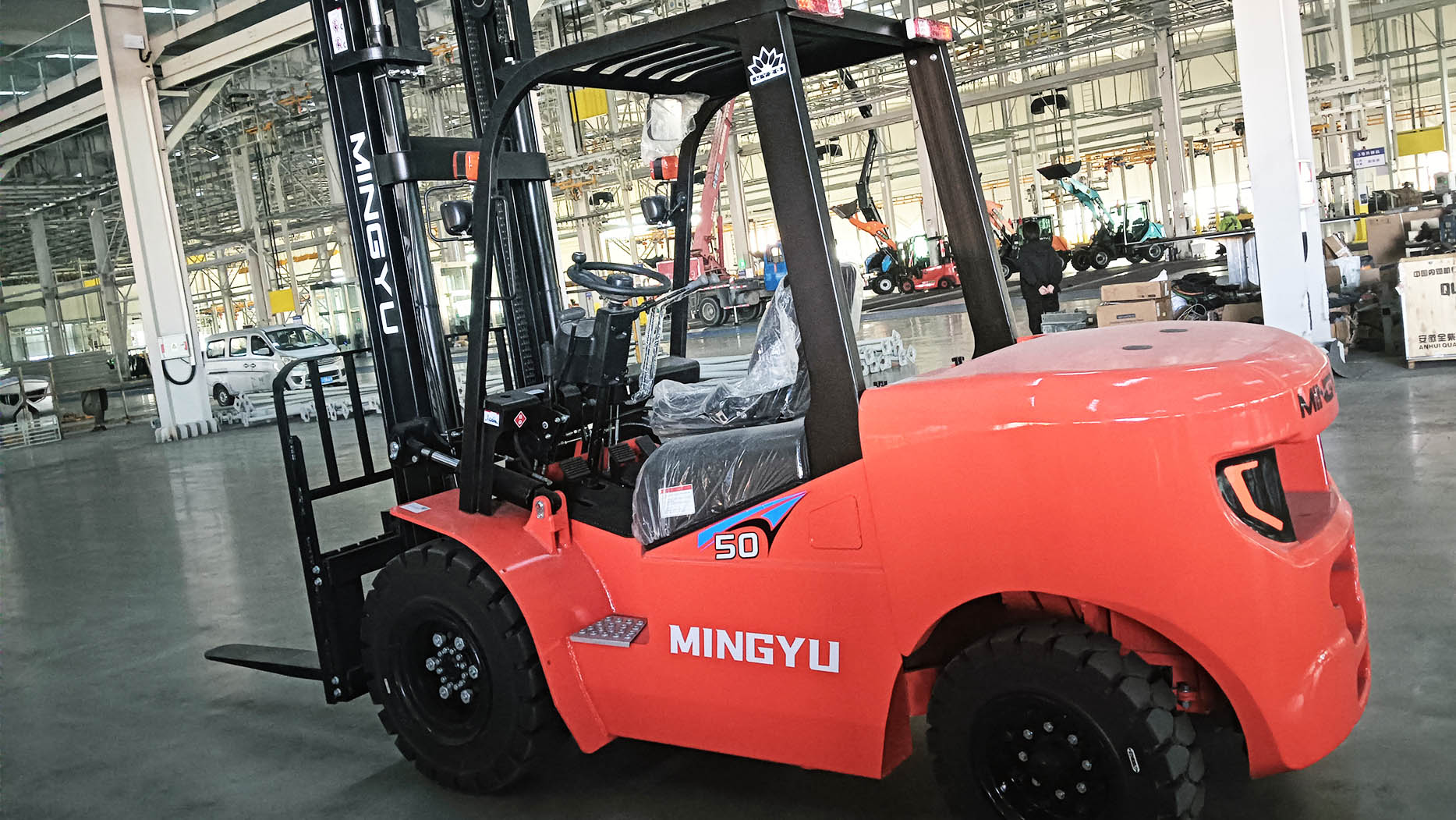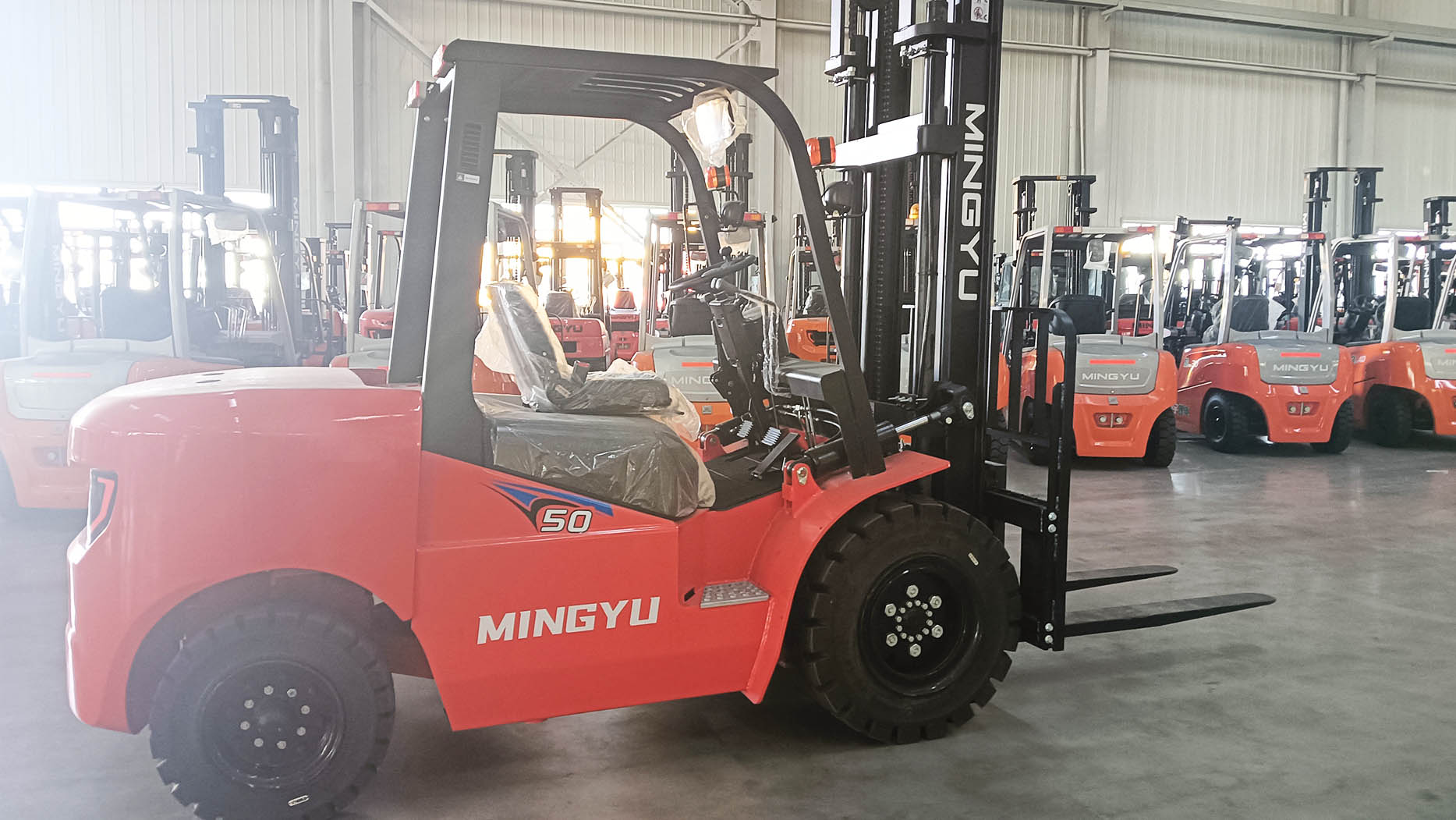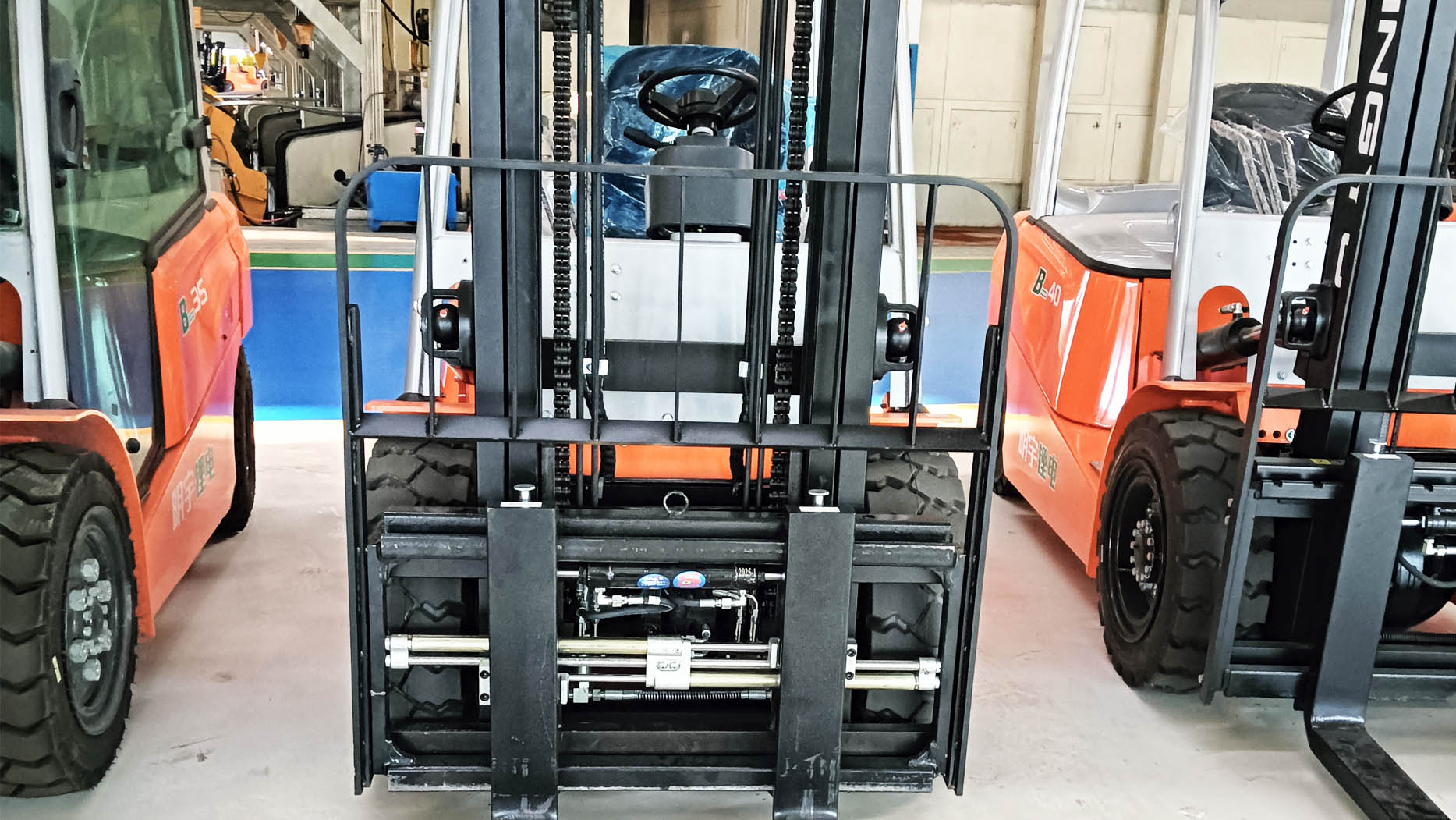Operating a diesel forklift is a skilled task that requires comprehensive training, a deep understanding of the machine's capabilities, and unwavering adherence to safety protocols. Unlike a standard car, a fork lift truck operates with a unique rear-wheel steering system, carries heavy, often unstable loads, and has a high center of gravity, making it inherently different to control. While specific operational nuances can vary slightly between models and manufacturers (such as those from MINGYU/MYZG), the fundamental principles of safe and efficient operation remain universal.
This guide will walk you through the essential steps and best practices for operating a diesel forklift, emphasizing safety, precision, and productivity. Remember, this information is a guide and should always be supplemented by formal, certified operator training, adherence to local regulations, and careful study of your specific fork truck forklift's operator manual.
Before You Start: The Pre-Operation Checklist
A responsible operator always begins with a thorough inspection. This "pre-op" check is vital for identifying potential issues before they become hazards or cause breakdowns.
Conduct a Visual Walk-Around:
Tires: Check for proper inflation, cuts, damage, and excessive wear. Ensure lug nuts are secure. Proper tire pressure is crucial for stability and fuel efficiency.
Forks and Mast: Inspect forks for cracks, bends, or damage. Ensure the heel is not worn. Check mast rails for debris and smooth operation. Look for wear or damage to the lift chains, rollers, and sprockets.
Hydraulic Hoses and Cylinders: Look for any leaks, cracks, bulges, or visible damage. Pay attention to connections.
Fluid Levels: Check engine oil, hydraulic fluid, coolant, and brake fluid. Top up as needed. For a diesel forklift, ensuring adequate fuel is also critical.
Leaks: Scan the ground under the forklift for any signs of fluid leaks (oil, fuel, coolant, hydraulic fluid).
Lights, Horn, and Safety Devices: Verify that all lights (headlights, brake lights, warning lights), the horn, backup alarm, and strobes are clean and functional. Ensure mirrors are clean and properly adjusted. Check that the fire extinguisher (if present) is accessible and charged.
Overhead Guard and Load Backrest: Inspect for any damage or deformation. These are critical safety components.
Operator Compartment: Ensure it's clear of debris. Check that the seatbelt is functional and the seat is adjusted correctly.

Basic Controls:
Accelerator Pedal: Controls engine RPM and forward/reverse speed.
Brake Pedal: Used to slow down and stop the forklift.
Directional Control Lever: Typically a small lever (or button/switch) to select Forward, Neutral, or Reverse. Located near the steering wheel or on a joystick.
Lift/Lower Lever: Controls the vertical movement of the forks. Pushing forward lowers, pulling back lifts.
Tilt Lever: Controls the mast tilt. Tilting forward lowers the fork tips, tilting back raises them. Tilting back (towards the operator) is crucial for stabilizing loads during transport.
Side Shift Lever (if equipped): Allows the forks to move laterally (left or right) without repositioning the entire forklift, greatly aiding precision in loading/unloading.
Auxiliary Hydraulic Levers (if equipped): Control additional skid steer attachments or specialized hydraulic functions (e.g., clamp, rotator).
Operating the Forklift: Principles and Best Practices
Safe and efficient operation relies on understanding the forklift's dynamics and following established safety rules.
Stability Triangle and Load Center:
A forklift's stability is defined by a "stability triangle" formed by its wheels and the pivot point of the steer axle.
The load center is the horizontal distance from the vertical face of the forks to the center of gravity of the load. Most forklifts are rated for a specific load capacity at a standard load center (e.g., 6,000 lbs at 24 inches).
Crucial Rule: Never exceed the forklift's rated capacity or its rated capacity at the actual load center. Overloading or operating with an extended load center is the primary cause of tip-overs. Always check the data plate.
Picking Up a Load:
Approach Squarely: Approach the pallet or load squarely and slowly, with the forks level and slightly below the pallet entry points.
Insert Forks Fully: Drive forward until the forks are fully inserted into the pallet, reaching past the center of gravity of the load. This ensures stability.
Lift and Tilt Back: Lift the load slightly clear of the ground. Crucially, tilt the mast fully back to secure the load against the load backrest. This prevents the load from sliding forward during travel.
Check Clearance: Ensure the load is clear of any obstructions before moving.
 Traveling with a Load:
Traveling with a Load:
Load Position: Always travel with the load carried as low as possible (typically 4-6 inches off the ground) and with the mast tilted fully back. This keeps the center of gravity low and stable.
Visibility:
If the load obstructs your forward view, travel in reverse, looking over your shoulder. Use mirrors and always look in the direction of travel.
Be extra cautious at intersections, blind corners, and doorways. Use the horn to alert others.
Speed: Maintain a safe speed appropriate for the conditions and load. Never exceed walking speed in warehouses. On uneven outdoor terrain (common for a diesel forklift), reduce speed significantly.
Ramps/Grades:
Loaded: Always ascend (go up) ramps with the load facing uphill. Always descend (go down) ramps with the load facing uphill (i.e., travel in reverse). This maintains stability and prevents the load from tipping forward.
Unloaded: The opposite of loaded. Ascend ramps with forks facing downhill; descend with forks facing downhill.
Pedestrians: Always give way to pedestrians. Maintain a safe distance.
Rough Terrain (for Diesel Forklifts): Drive slowly and deliberately. Be aware of ruts, holes, soft ground, and obstacles. The larger tires and higher ground clearance of a diesel forklift allow it to navigate these, but caution is still paramount.
Placing a Load:
Approach Squarely: Approach the target location (rack, stack, truck bed) squarely and slowly.
Level Forks: Raise the load to the desired height, then carefully level the forks.
Position Load: Drive forward slowly until the load is correctly positioned.
Lower and Tilt: Slowly lower the load into place. Once the load is fully supported by the rack or stack, tilt the mast slightly forward to fully disengage the forks.
Back Out Slowly: Once clear, lower the forks to the transport position and slowly back away.
Parking the Forklift:
Park in designated areas only.
Lower the forks completely to the ground.
Tilt the mast slightly forward.
Engage the parking brake.
Place the directional control in neutral.
Turn off the engine. For a diesel forklift, allow it to idle for a minute after heavy use to cool down the turbocharger (if equipped) before shutting off.
Remove the key.
 Important Safety Rules and Best Practices
Important Safety Rules and Best Practices
Operating a fork lift truck demands constant vigilance and adherence to strict safety rules:
Certification: Only trained and certified operators are permitted to operate a forklift. This is a legal requirement in most regions.
Load Capacity: Never exceed the rated load capacity on the data plate.
Load Security: Always ensure the load is stable and securely placed on the forks, tilted back against the load backrest.
Visibility: Maintain a clear line of sight. If visibility is obstructed, travel in reverse. Use spotters if necessary.
Clearance: Be aware of overhead clearance, aisle widths, and door frames.
Seatbelt: Always wear your seatbelt.
No Riders: Never allow unauthorized riders on the forklift.
Hands and Feet: Keep hands and feet inside the operator's compartment at all times.
No Stunt Driving: Avoid sudden starts, stops, or turns. Forklifts are not designed for rapid maneuvers.
Maintenance: Report any maintenance issues immediately. A well-maintained fork lift truck (whether a diesel forklift or a fork lift truck electric) is a safer fork lift truck.
Environmental Awareness: Be aware of slippery surfaces, pedestrian traffic, and other equipment in the vicinity. For diesel forklifts, be mindful of exhaust fumes in enclosed or poorly ventilated areas, even if briefly.
MINGYU/MYZG and Other Forklift Brands
Whether you're operating a diesel forklift from a globally recognized brand or one from reputable manufacturers like MINGYU/MYZG, the core operational principles remain consistent. Brands like MINGYU/MYZG focus on providing robust and reliable fork lift truck solutions, including various diesel forklift models. While specific control layouts or digital displays might differ, the foundational knowledge of operating a fork truck forklift as outlined here applies universally. Always consult the specific operator manual for any particular model, be it a new purchase or a forklift second hand for sale.
In conclusion, operating a diesel forklift effectively is a blend of technical skill, disciplined safety adherence, and constant awareness of the environment and the machine's capabilities. From the initial pre-operation checks to precise load handling and responsible shutdown procedures, every step contributes to efficient and safe material movement. Continuous training and a commitment to best practices are the keys to mastering this essential piece of heavy machinery and ensuring both productivity and safety on any job site.
Post time:Jul.02.2025
